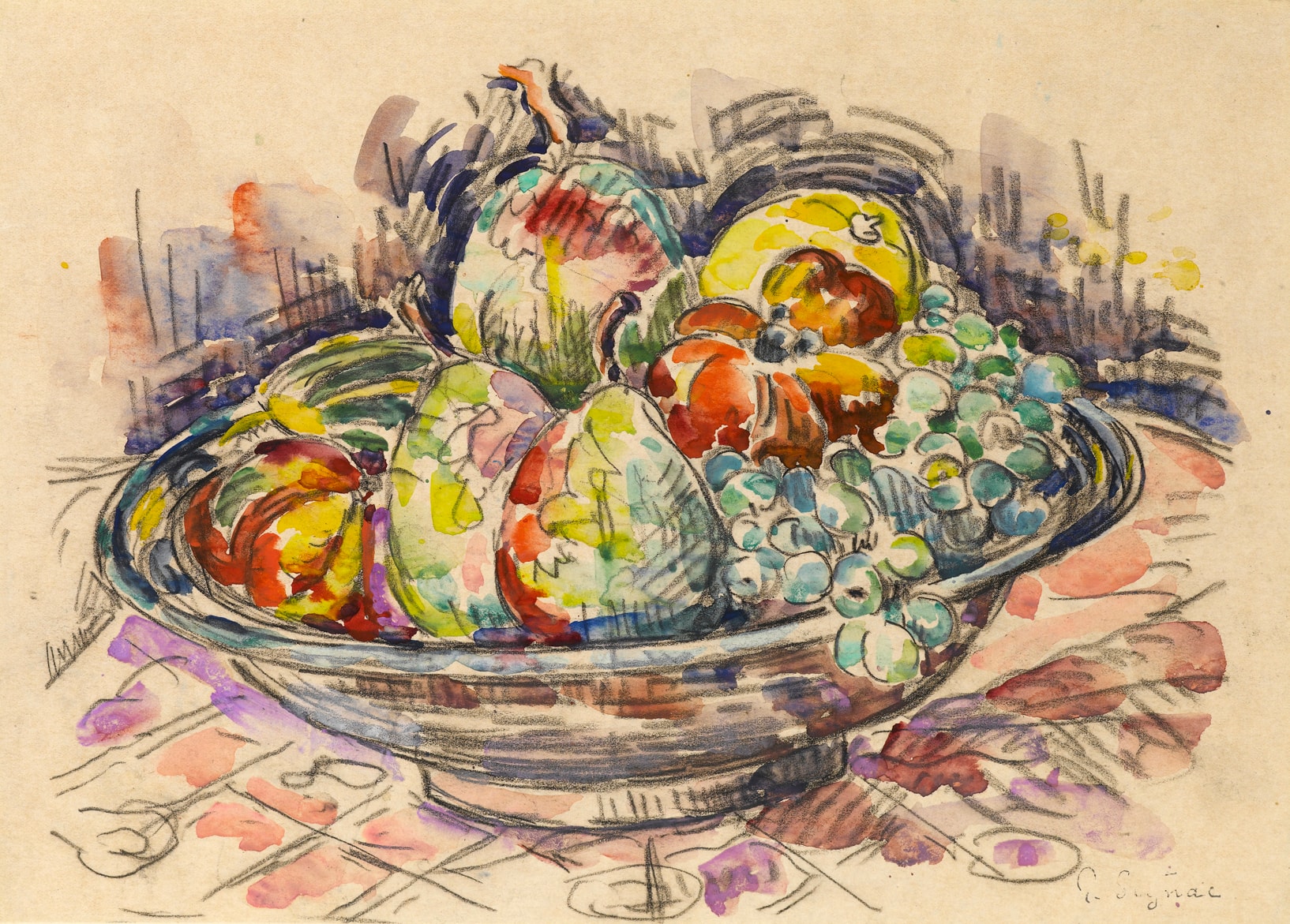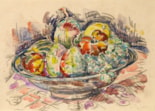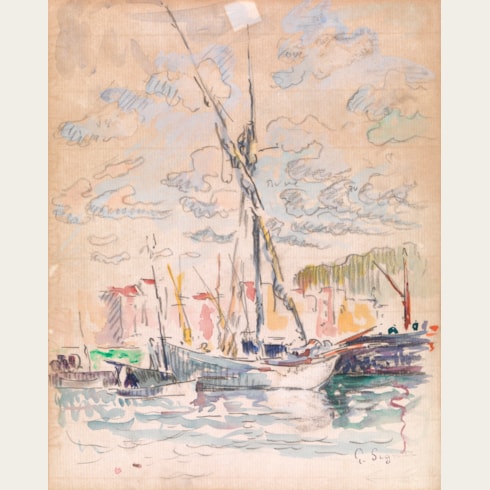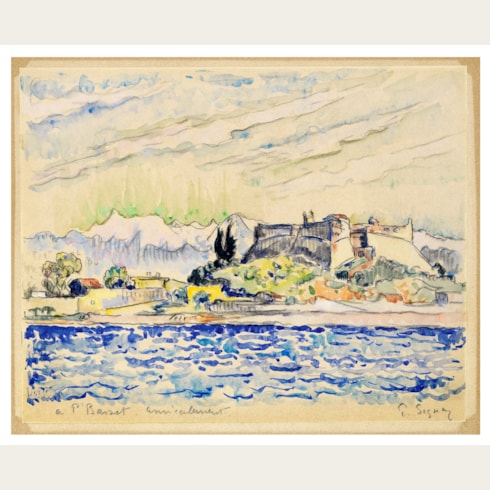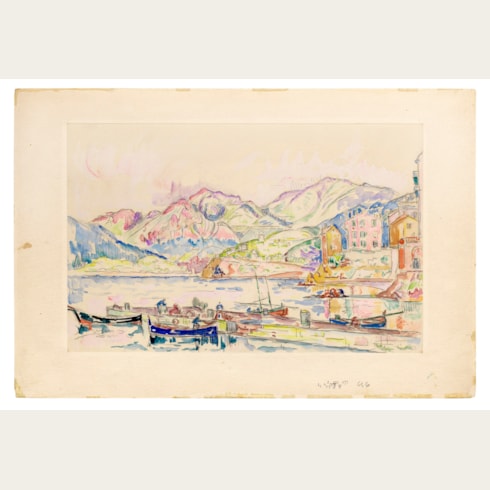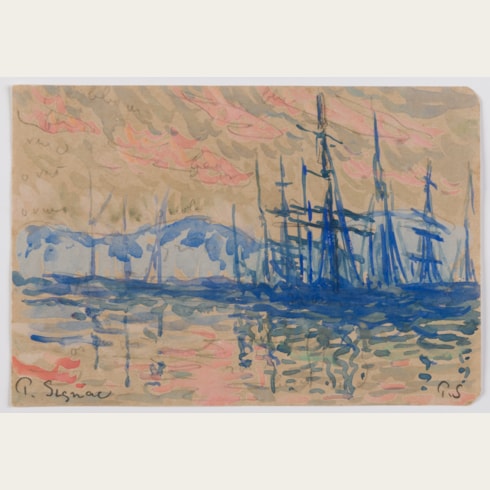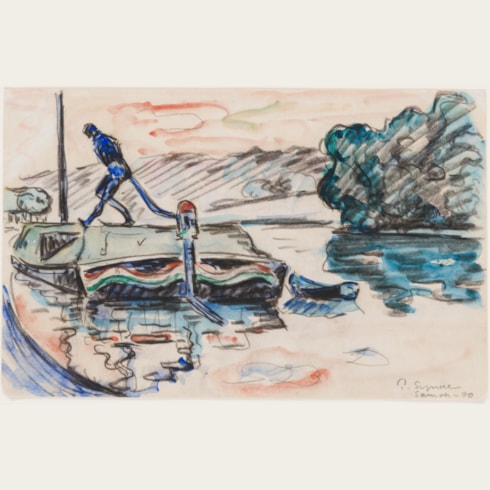Paul SIGNAC
(Paris 1863 - Paris 1945)
Still Life with a Bowl of Fruit
Sold
Charcoal and watercolour.
Stamped with the posthumous atelier stamp (Lugt 2285b) at the lower right.
207 x 291 mm. (8 1/8 x 11 1/2 in.)
Stamped with the posthumous atelier stamp (Lugt 2285b) at the lower right.
207 x 291 mm. (8 1/8 x 11 1/2 in.)
Paintings and watercolours of still-life subjects account for only a very small part of Signac’s extensive oeuvre. The artist first mentioned his watercolours of fruit and flowers in a letter to his friend, the write Félix Fénéon in September 1918, and the earliest of these drawings may be dated to the latter months of that year and the early part of 1919. In these works Signac was inspired by the still life watercolours of Paul Cézanne, which he would have seen at exhibitions at a handful of galleries in Paris. While the broad patches of watercolour in drawings such as the present sheet may reflect the particular influence of Cézanne’s watercolour technique, Signac’s still life compositions are distinguished from those of Cézanne in the younger artist’s preference for more vibrant colours.
The present sheet may be compared stylistically with a handful of still life watercolours by Signac which date from the 1920’s. These include A Basket of Fruit and A Pitcher of Tulips in the collection of James T. Dyke, as well as a Still Life with Fruit and Vegetables, dated 1926, in the Arkansas Art Center in Little Rock, Arkansas.
The present sheet may be compared stylistically with a handful of still life watercolours by Signac which date from the 1920’s. These include A Basket of Fruit and A Pitcher of Tulips in the collection of James T. Dyke, as well as a Still Life with Fruit and Vegetables, dated 1926, in the Arkansas Art Center in Little Rock, Arkansas.
Active as a painter, draughtsman, writer and collector, Paul Signac was one of the leading artists of the Neo-Impressionist movement. He came from a wealthy bourgeois family, and as such was able to support the careers of several of his fellow artists as a patron and collector. He became a close friend of Georges Seurat, whose work he first encountered at the inaugural exhibition of the Société des Artistes Indépendants in 1884, and between them the two painters formed the nucleus of the group of artists known as the Neo-Impressionists. Signac would spend the winter working in his Parisian studio, while the summer months were spent painting at a coastal resort, eventually settling in Saint-Tropez from 1892 onwards. In 1904 Henri Matisse spent the summer with Signac at Saint-Tropez, a period that was to have a profound effect on the younger artist.
Signac painted around six hundred canvases as well as a significant body of works on paper, mainly watercolours. As Marina Ferretti Bocquillon has noted, ‘Signac was the neo-impressionist who practiced watercolor most consistently…For him, watercolor was a seductive alternative to the demanding labor of studio painting, a zone of freedom that suited his restless temperament and love of the outdoors. It gradually took over from his work in oil...’
Provenance
The studio of the artist (Lugt 2285b)
Marlborough Gallery, London, in 1959
Marlborough-Gerson Gallery, New York
Shirley Arnoff Baerwald, New York.
Exhibition
London, Marlborough Fine Art Ltd., XIX & XX Century European Masters: Paintings Drawings Sculpture, Summer 1959, no.73.

